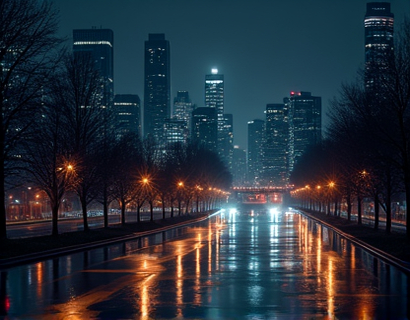Embark on a Historical Adventure: A Comprehensive Traveler's Guide to the Cultural Heritage and Historical Sites of the Ancient Indus Valley
The ancient Indus Valley, a cradle of civilization, beckons travelers and history enthusiasts with its rich tapestry of cultural heritage and historical landmarks. This region, spanning parts of modern-day Pakistan and northwestern India, was home to one of the world's earliest urban civilizations, the Indus Valley Civilization, which flourished around 2600-1900 BCE. This guide serves as an essential resource for those seeking to explore the profound history, stunning architecture, and vibrant culture of this timeless region. From the bustling streets of modern cities to the serene ruins of ancient cities, this journey promises an unforgettable experience for all who venture into the heart of the Indus Valley.
Understanding the Indus Valley Civilization
The Indus Valley Civilization, also known as the Harappan Civilization, is renowned for its advanced urban planning, sophisticated water management systems, and intricate craftsmanship. The civilization is named after the city of Harappa, one of its major archaeological sites, discovered in the 1920s. The people of this civilization were skilled in metallurgy, pottery, and textile production, and their trade networks extended as far as Mesopotamia and the Persian Gulf. Despite the lack of a deciphered written script, archaeologists have pieced together a vivid picture of a society that valued order, hygiene, and community.
One of the most fascinating aspects of the Indus Valley Civilization is its urban design. Cities like Mohenjo-Daro and Harappa were built with well-planned streets, drainage systems, and public baths. The Great Bath of Mohenjo-Daro, a massive structure with a sophisticated waterproofing system, is a testament to the engineering prowess of its builders. These cities were not only centers of administration and trade but also hubs of cultural and religious activities, as evidenced by the numerous seals and artifacts found at the sites.
Exploring Major Historical Sites
Visitors to the Indus Valley can explore a multitude of historical sites, each offering a unique glimpse into the past. Mohenjo-Daro, located in the province of Sindh, Pakistan, is one of the most significant and well-preserved sites. The city's layout, with its central marketplace, public baths, and residential areas, provides a clear picture of urban life in ancient times. The Granary, a massive storage structure, and the Citadel, with its imposing walls and defensive structures, highlight the city's importance as a center of commerce and governance.
Harappa, situated in Punjab, Pakistan, is another crucial site that offers a comprehensive view of the Indus Valley Civilization. The site includes the Granary, a sophisticated drainage system, and numerous residential and industrial areas. The Discovery of the Priest-King statue, a life-sized bronze figure, has sparked much debate among historians and archaeologists, suggesting the presence of a ruling elite or religious leaders. The site also features a large public bath, similar to the one in Mohenjo-Daro, emphasizing the civilization's emphasis on cleanliness and hygiene.
Other notable sites include Dholavira in Gujarat, India, known for its intricate water management systems and well-preserved structures, and Rakhigarhi, also in Haryana, which is one of the largest Harappan sites and provides insights into the civilization's rural life. Each site offers a unique perspective on the daily life, social structure, and technological advancements of the Indus Valley people.
Cultural Heritage and Local Insights
Beyond the archaeological sites, the Indus Valley region is rich in cultural heritage and local traditions. The area is home to a diverse population with a blend of ethnicities, languages, and religions. Visitors can experience the vibrant local culture by exploring traditional markets, sampling local cuisine, and participating in local festivals. The cuisine of the region is a delightful fusion of flavors, with dishes like biryani, kebabs, and various vegetarian options reflecting the influence of both Indian and Pakistani culinary traditions.
One of the best ways to immerse oneself in the local culture is to visit the smaller towns and villages surrounding the major historical sites. These areas offer a glimpse into the daily lives of the people who continue to be influenced by the ancient civilization. The craftsmanship of local artisans, from pottery to textiles, showcases the enduring skills passed down through generations. Visitors can also explore local mosques, temples, and shrines, each with its own historical and cultural significance.
For those interested in the spiritual and religious aspects of the region, a visit to the ancient Buddhist site of Sanchi in Madhya Pradesh, though not part of the Indus Valley proper, provides a complementary experience. The stupas and monastic complexes here offer insights into the spread of Buddhism from the Indus Valley to other parts of the subcontinent.
Practical Travel Tips
Planning a trip to the Indus Valley requires careful consideration of several factors to ensure a smooth and enriching experience. Travelers should start by checking the visa requirements for Pakistan and India, as entry regulations can be stringent. It is advisable to hire a local guide or join a guided tour to gain deeper insights into the historical and cultural context of the sites. These guides can also help navigate the logistical challenges of traveling in the region.
Weather is another crucial factor to consider. The climate in the Indus Valley can be extreme, with hot summers and cool winters. Light clothing, sunscreen, and a hat are essential for summer visits, while warmer layers are necessary for cooler months. The monsoon season, typically from July to September, can affect travel plans, so it's best to avoid this period if possible.
Accommodation options range from luxury hotels in major cities to budget-friendly guesthouses and homestays in smaller towns. Booking in advance, especially during peak travel seasons, is recommended to secure comfortable lodging. Transportation within the region is relatively convenient, with buses, trains, and taxis available. However, renting a car or joining a private transfer service can provide more flexibility, especially when visiting remote sites.
For those interested in a more off-the-beaten-path experience, exploring the lesser-known sites and local villages can be rewarding. The Cholistan Desert, for instance, offers a unique landscape and the opportunity to visit ancient settlements like Bhirrana, one of the earliest known Harappan sites. However, traveling in these areas requires careful planning and preparation.
Essential Resources for Travelers
To make the most of your journey to the Indus Valley, it is helpful to have a variety of resources at your disposal. Travel guides, both physical and digital, provide detailed information on historical sites, local customs, and practical tips. Online platforms like UNESCO's World Heritage List and archaeological surveys offer valuable insights into the significance of the sites. Local tourism boards and cultural centers can also provide up-to-date information and recommendations.
For history buffs, academic books and scholarly articles on the Indus Valley Civilization offer a deeper understanding of the region's history and culture. Museums in major cities, such as the National Museum in New Delhi and the Provincial Museum in Lahore, house extensive collections of artifacts from the Indus Valley sites, providing a visual and educational experience.
Travel forums and community groups can be invaluable for gathering advice from fellow travelers who have visited the region. These platforms often share personal experiences, hidden gems, and practical tips that can enhance your trip. Social media and travel blogs are also great resources for real-time updates and inspiration.
Conclusion
The Indus Valley Civilization is a testament to the ingenuity and sophistication of ancient human societies. By exploring its historical sites, immersing oneself in the local culture, and following practical travel tips, visitors can gain a profound appreciation for this timeless region. Whether you are a history enthusiast, a cultural explorer, or simply a curious traveler, the Indus Valley promises an unforgettable adventure. Embrace the journey, and let the ancient secrets of the Indus Valley unfold before your eyes.










































